TABLE 14-16
What are the factors that determine the acceleration time (in sec.) from 0 to 60 miles per hour of a car? Data on the following variables for 171 different vehicle models were collected:
Accel Time: Acceleration time in sec.
Cargo Vol: Cargo volume in cu. ft.
HP: Horsepower
MPG: Miles per gallon
SUV: 1 if the vehicle model is an SUV with Coupe as the base when SUV and Sedan are both 0
Sedan: 1 if the vehicle model is a sedan with Coupe as the base when SUV and Sedan are both 0
The regression results using acceleration time as the dependent variable and the remaining variables as the independent variables are presented below.
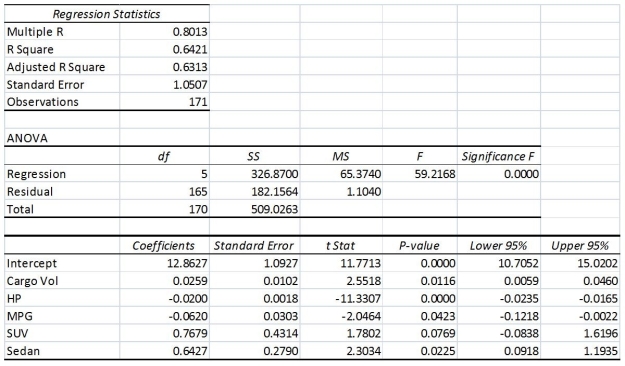
The various residual plots are as shown below.
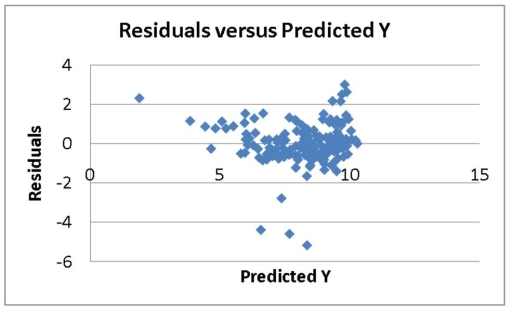
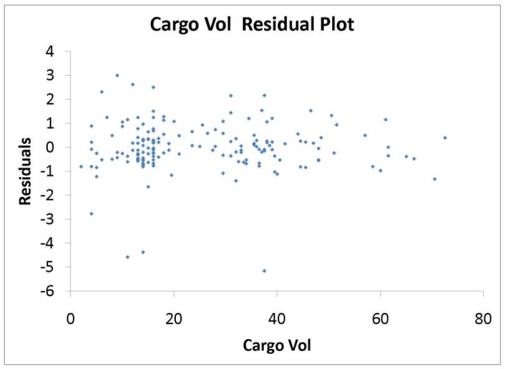
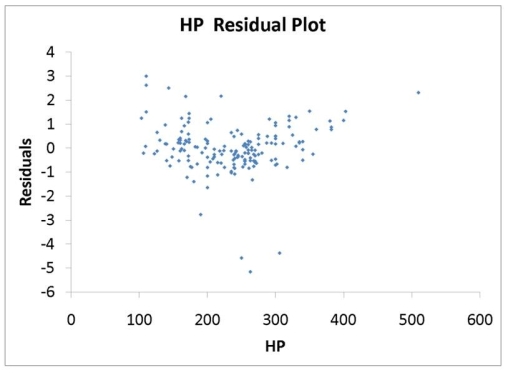
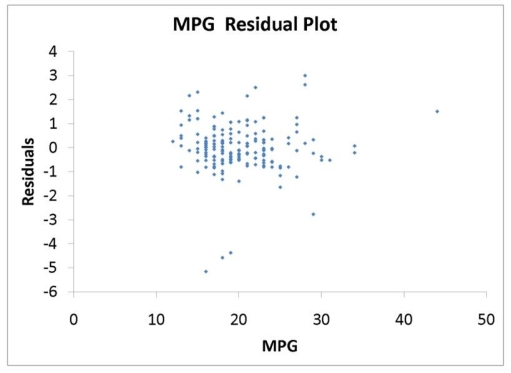
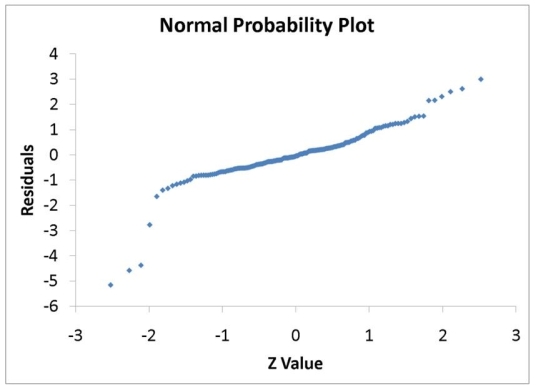

-Referring to 14-16, what is the correct interpretation for the estimated coefficient for HP?
Definitions:
Permanent Internet
The concept that connectivity and online access are continuous and unending in modern society.
Identification
encompasses the process of recognizing or establishing the identity of a person or thing, often used in research to distinguish subjects or variables.
Relevant Information
Information that is significant to the decision-making process, directly impacting the outcome or result.
Communication Research
The examination of the ways in which individuals create meanings through the use of messages in different contexts, through various channels, and across multiple media.
Q14: Referring to Table 12-16, what is the
Q30: Referring to Table 15-6, there is reason
Q34: Referring to Table 17-2, what is the
Q83: Referring to Table 14-8, the analyst wants
Q85: Referring to Table 15-6, what is the
Q114: Referring to Table 13-10, the value of
Q119: Referring to Table 17-3, suppose the analyst
Q177: Referring to Table 14-8, the value of
Q285: Referring to Table 14-7, the department head
Q319: Referring to Table 14-17 Model 1, the